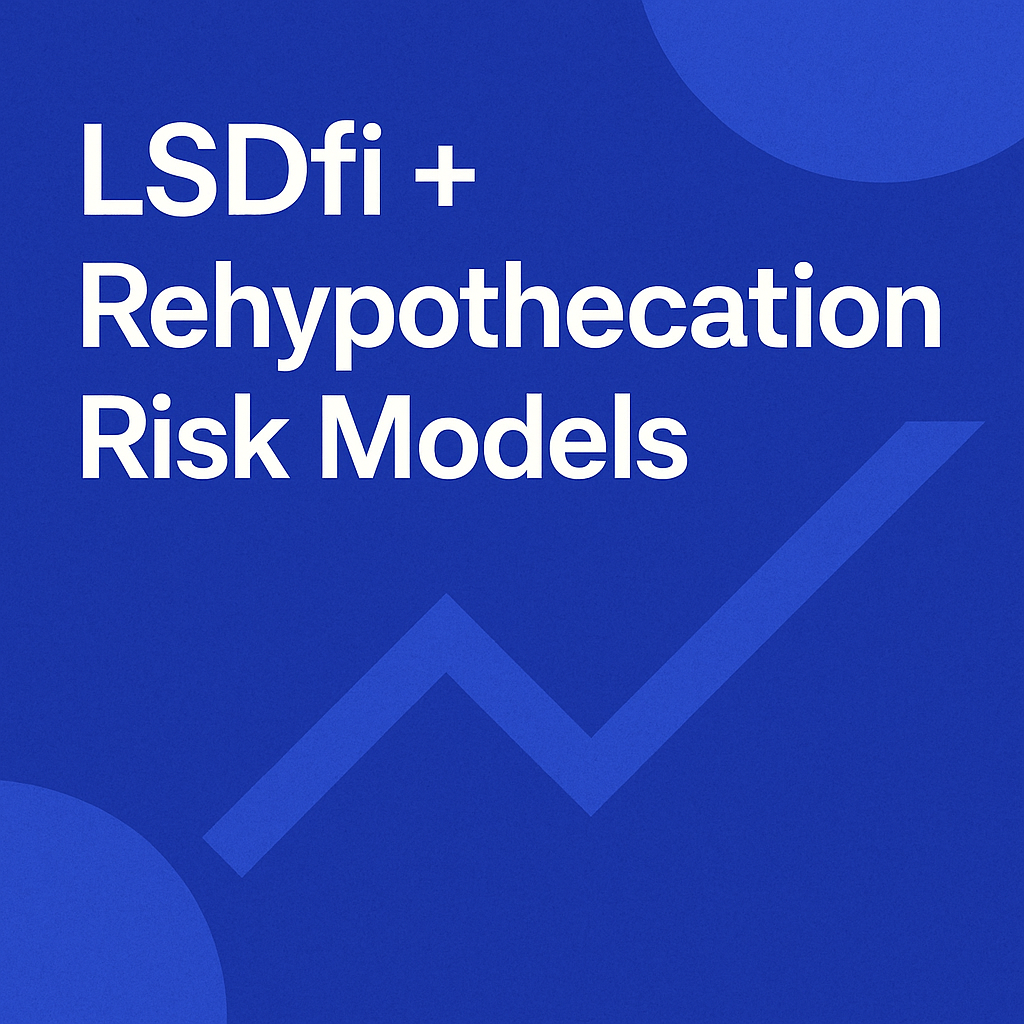LSDfi and Rehypothecation: Opportunities and Risk Models

LSDfi (Liquid Staking Derivatives Finance) is a growing sector in DeFi, built on top of liquid staking tokens like stETH, rETH, or osETH. These tokens represent staked ETH while still being tradeable and usable in DeFi. LSDfi protocols allow users to deposit these tokens to earn additional yield, borrow against them, or even restake them into new systems.
But as the ecosystem matures, rehypothecation risk becomes more important to understand.
What is Rehypothecation in DeFi?
Rehypothecation is when a protocol or platform reuses collateral (in this case, LSDs) for multiple purposes. For example:
- A user deposits stETH to Protocol A and receives a yield-bearing receipt token.
- Protocol A then uses that stETH to provide liquidity or borrow on another platform (Protocol B).
- Protocol B may do the same again.
This creates layers of dependency. The same ETH is being used in multiple ways across protocols — stacking risk.
How LSDfi Rehypothecation Works
In traditional LSDfi:
- You stake ETH → Receive stETH (Liquid Staking Token).
- You deposit stETH into a lending platform → Borrow stablecoins.
- You use those stablecoins elsewhere — or loop back to buy more ETH, stake again, and repeat.
In rehypothecated LSDfi:
- The protocol itself takes your stETH and deposits it elsewhere to maximize yield.
- Some protocols even wrap your LSD into a new token (e.g., ezETH, rsETH) that is auto-restaked or used in leveraged strategies.
Why It’s Powerful
- Higher Capital Efficiency: Every layer tries to extract yield from the same base asset.
- Restaking Stacks Yield: LSDs can participate in EigenLayer restaking for extra rewards.
- Composable Strategies: LSDfi assets can be used in DAOs, perps, or even RWA-backed vaults.
The Risks of Rehypothecation
Rehypothecation introduces systemic and cascading risks:
1. Collateral Chain Fragility
If one layer in the chain fails or gets hacked, it can affect all upstream protocols. For example:
- Protocol B suffers a smart contract bug → Protocol A’s stETH gets locked or lost → Users in Protocol A can’t withdraw.
2. Liquidity Mismatch
If stETH is restaked or locked in a long-term vault, and users want to exit, there may not be enough liquid tokens available for redemptions. This can cause withdrawal delays or even a bank run.
3. Hidden Leverage
Each layer may use leverage, increasing potential returns and risks. If liquidations happen, it can cascade rapidly through the stack.
4. Pricing and Oracle Risk
Since LSDs don't always trade 1:1 with ETH, mispricing or oracle manipulation can lead to undercollateralization, especially in lending or leverage loops.
Risk Modeling Approaches
To manage and quantify these risks, protocols and researchers are developing models such as:
1. Dependency Graph Models
Map how assets flow across protocols and identify critical paths. Similar to credit risk trees in TradFi.
2. Stress Testing Scenarios
Simulate sharp price drops, protocol failures, or slippage across LSDs to see how the chain reacts.
3. Redemption Rate Models
Track how much of the collateral can actually be redeemed under different liquidity conditions.
4. Smart Contract Exposure Maps
Audit how many smart contracts your LSD touches from deposit to end yield. The more contracts, the higher the attack surface.
Conclusion
LSDfi is unlocking powerful opportunities by turning staked ETH into composable, yield-generating assets. But with rehypothecation, the same collateral can be reused across multiple layers — multiplying both returns and risks. As this ecosystem grows, understanding the hidden leverage, liquidity mismatches, and protocol interdependencies becomes critical.
To ensure long-term stability, protocols must prioritize transparency, build robust risk models, and limit unchecked rehypothecation. For users, it's no longer enough to chase yield — it’s essential to understand where your assets go and what risks they’re exposed to.
LSDfi is shaping the future of DeFi, but without proper safeguards, it risks repeating the same fragility we’ve seen in traditional finance.
For More Info related to Mitosis please follow official links below
Mitosis Website : https://mitosis.org/
Mitosis Expedition : https://expedition.mitosis.org/
Mitosis Docs : https://docs.mitosis.org/


Comments ()